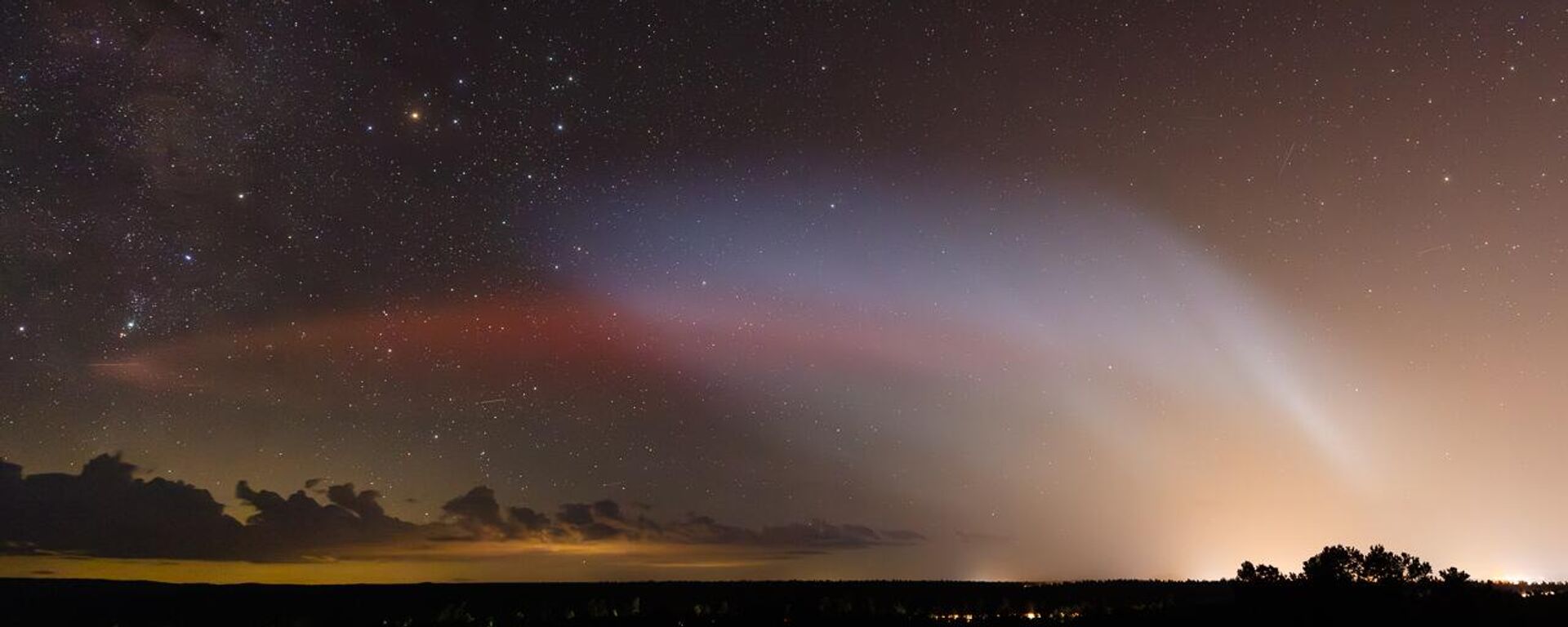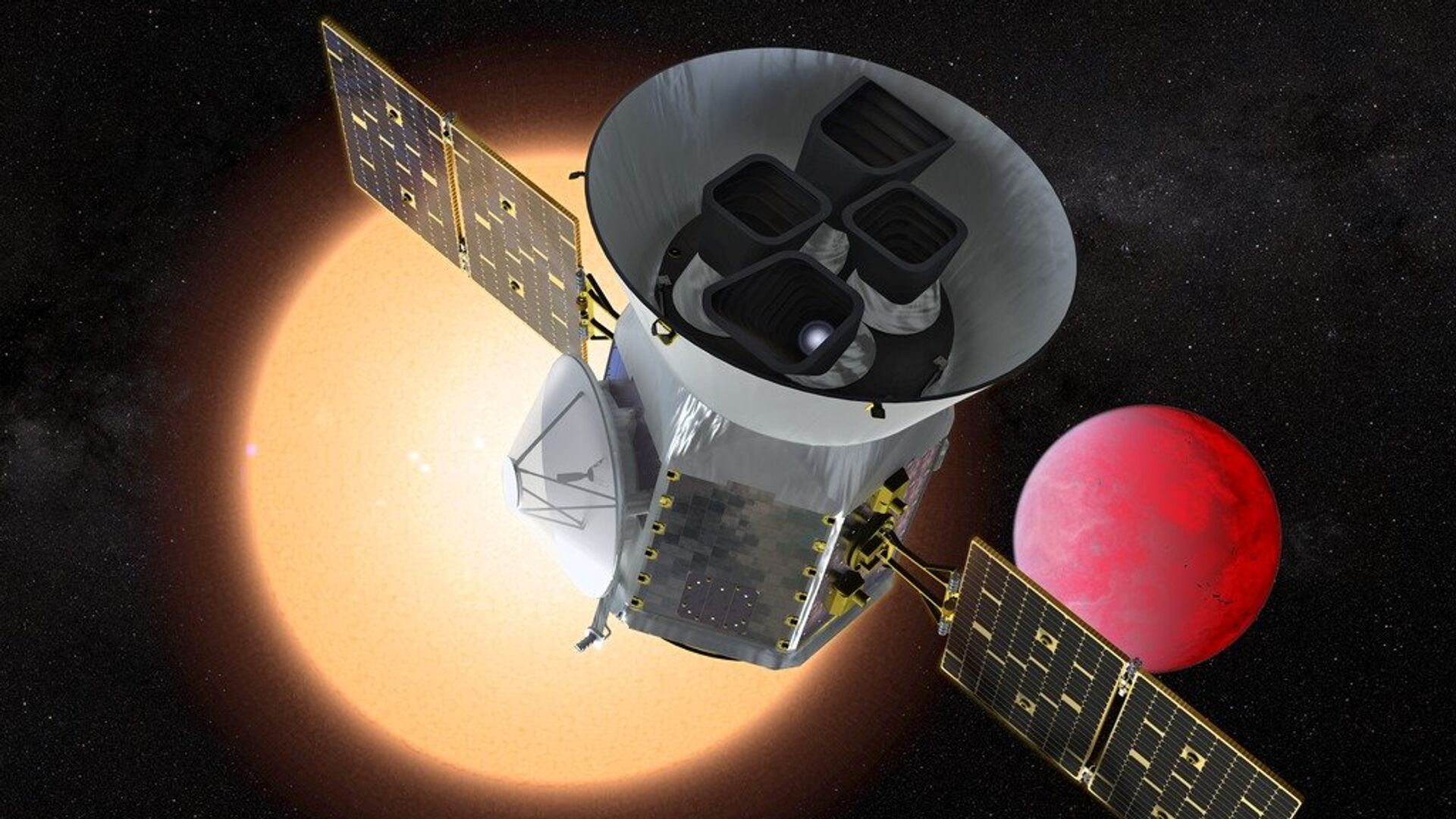https://sputnikglobe.com/20231129/astronomers-spot-rare-six-planet-system-that-orbit-star-in-sync-1115288565.html
Astronomers Spot Rare Six-Planet System That Orbit Star 'In Sync'
Astronomers Spot Rare Six-Planet System That Orbit Star 'In Sync'
Sputnik International
For planet-hunting astronomers, finding a star system with six planets is rare enough, but one system recently spotted 100 light-years away has six planets that orbit in lock-step with one another.
2023-11-29T18:52+0000
2023-11-29T18:52+0000
2023-11-29T18:52+0000
beyond politics
transiting exoplanet survey satellite (tess)
exoplanets
astronomy
orbit
https://cdn1.img.sputnikglobe.com/img/106360/63/1063606329_0:97:1024:673_1920x0_80_0_0_a13ed2a7abdf6622265682a7d5acb15b.jpg
The six planets orbit a star designed HD110067, which from the perspective of an Earth observer sits in the constellation Coma Berenices. It was first spotted as a potential planet-possessing star in 2020, when NASA's Transiting Exoplanet Survey Satellite (TESS) detected a distinct dip in its brightness - a telltale sign that a planet had passed in front of the star.Once scientists combined the TESS data with that from the European Space Agency's CHaracterizing ExOPlanet Satellite (Cheops) telescope, they discovered that HD110067 was quite the gem. Their work was published on Wednesday in Nature.“Sub-Neptunes” are planets larger than Earth, the largest rocky world in our solar system, but smaller than Neptune, the smallest gas giant in our solar system. Scientists think such worlds likely have solid cores and gaseous atmospheres. The rocky parallel to sub-Neptunes are “super-Earths,” which have solid crusts and thinner atmospheres.The six planets orbit in resonance with one another: the planet closest to the star makes three orbits for every two made by the next closest planet, a 3/2 resonance. That pattern holds true for each of the four closest planets. For the outer two, they follow a 4/3 resonance pattern - that is, the fifth planet makes three orbits for every four orbits the fourth planet makes, and the outermost planet makes three orbits for every four orbits the fifth planet makes.According to the scientists, these planets have maintained this pattern for billions of years, and likely settled into it as they were still forming. That means that unlike our solar system, there probably weren’t any “rogue planets” or major events to perturb their orbits after they formed.Some moons in our solar system have also been found to have orbital resonances around their host planets, such as Jupiter’s moons Io, Europa and Ganymede. Neptune and the dwarf planet Pluto also orbit the Sun in a 2/3 resonance.
https://sputnikglobe.com/20231128/spacex-auroras-scientists-say-musks-rockets-punching-atmospheric-holes-1115270670.html
Sputnik International
feedback@sputniknews.com
+74956456601
MIA „Rosiya Segodnya“
2023
News
en_EN
Sputnik International
feedback@sputniknews.com
+74956456601
MIA „Rosiya Segodnya“
Sputnik International
feedback@sputniknews.com
+74956456601
MIA „Rosiya Segodnya“
planets outside the solar system, do other stars have planets, star with six planets
planets outside the solar system, do other stars have planets, star with six planets
Astronomers Spot Rare Six-Planet System That Orbit Star 'In Sync'
For planet-hunting astronomers, finding a star system with six planets is rare enough, but one system recently spotted 100 light-years away has six planets that orbit in lock-step with one another.
The six planets orbit a star designed HD110067, which from the perspective of an Earth observer sits in the constellation Coma Berenices. It was first spotted as a potential planet-possessing star in 2020, when NASA's Transiting Exoplanet Survey Satellite (TESS) detected a distinct dip in its brightness - a telltale sign that a planet had passed in front of the star.
Once scientists combined the TESS data with that from the European Space Agency's CHaracterizing ExOPlanet Satellite (Cheops) telescope, they discovered that HD110067 was quite the gem. Their work was
published on Wednesday in Nature.
"This discovery is going to become a benchmark system to study how sub-Neptunes, the most common type of planets outside of the solar system, form, evolve, what are they made of, and if they possess the right conditions to support the existence of liquid water in their surfaces," University of Chicago scientist and study lead author Rafael Luque said in a news release.
“Sub-Neptunes” are planets larger than Earth, the largest rocky world in our solar system, but smaller than Neptune, the smallest gas giant in our solar system. Scientists think such worlds likely have solid cores and gaseous atmospheres. The rocky parallel to sub-Neptunes are
“super-Earths,” which have solid crusts and thinner atmospheres.

28 November 2023, 22:33 GMT
The six planets orbit in resonance with one another: the planet closest to the star makes three orbits for every two made by the next closest planet, a 3/2 resonance. That pattern holds true for each of the four closest planets. For the outer two, they follow a 4/3 resonance pattern - that is, the fifth planet makes three orbits for every four orbits the fourth planet makes, and the outermost planet makes three orbits for every four orbits the fifth planet makes.
According to the scientists, these planets have maintained this pattern for billions of years, and likely settled into it as they were still forming. That means that unlike our solar system, there probably weren’t any “rogue planets” or major events to perturb their orbits after they formed.
"We think only about one percent of all systems stay in resonance, and even fewer show a chain of planets in such configuration," said Luque, who added that was why HD110067 merits further study. "It shows us the pristine configuration of a planetary system that has survived untouched."
Some moons in our solar system have also been found to have orbital resonances around their host planets, such as
Jupiter’s moons Io, Europa and Ganymede. Neptune and the
dwarf planet Pluto also orbit the Sun in a 2/3 resonance.





